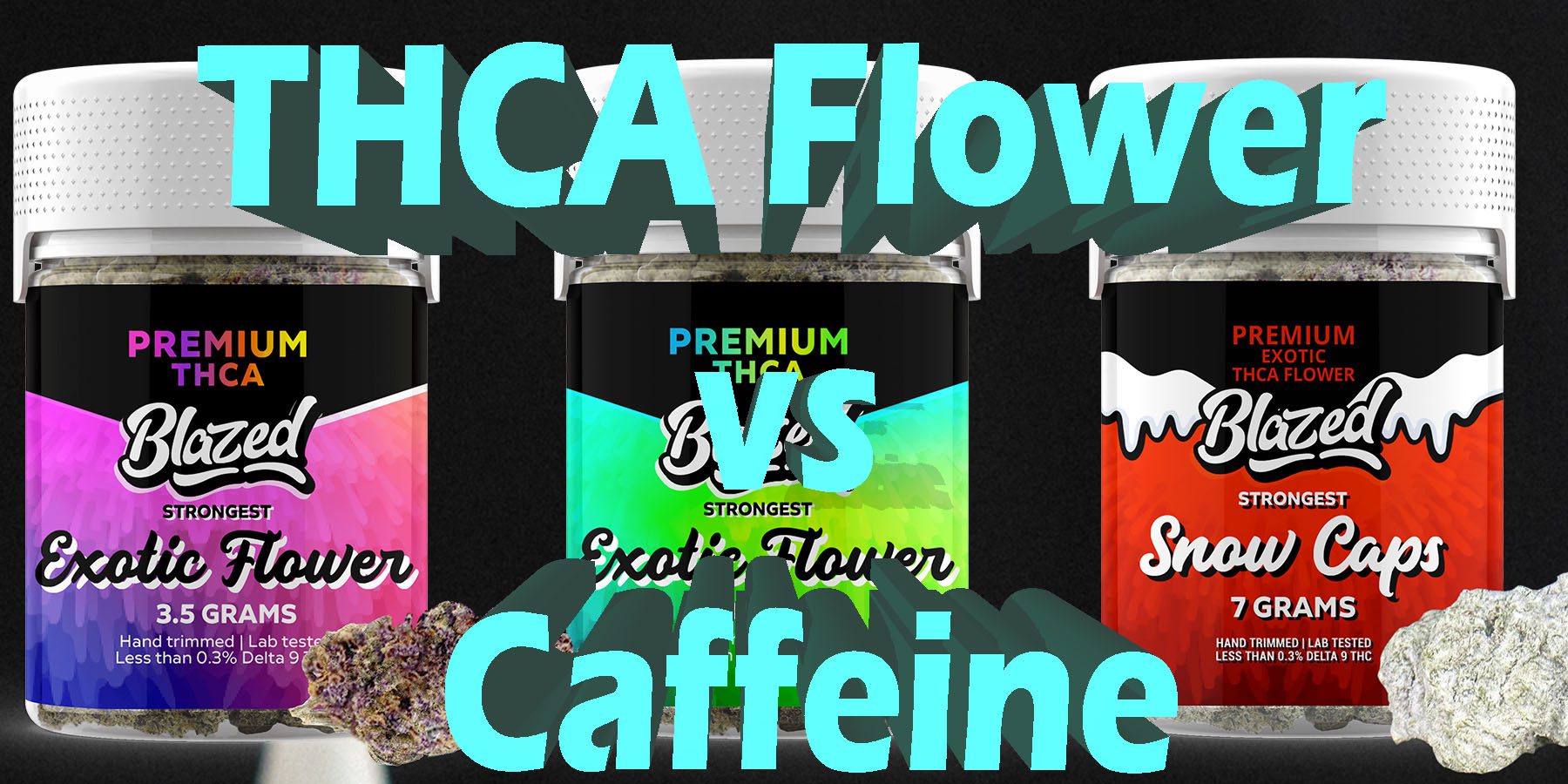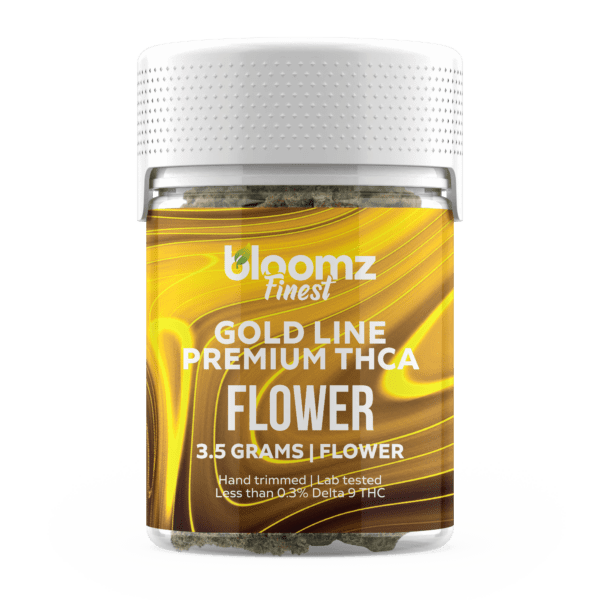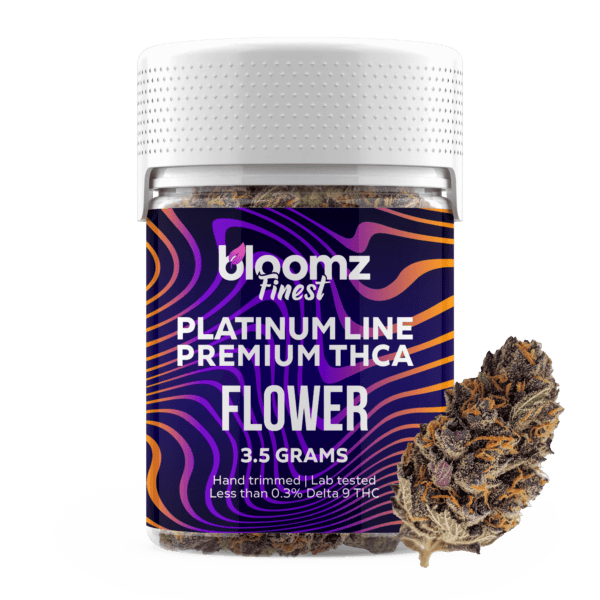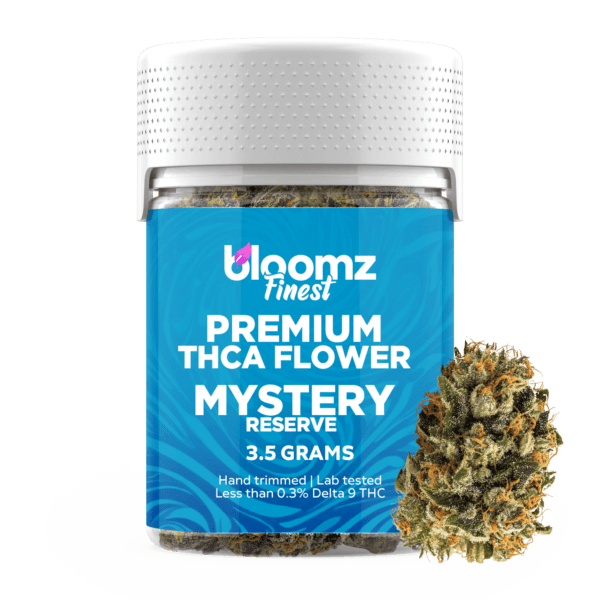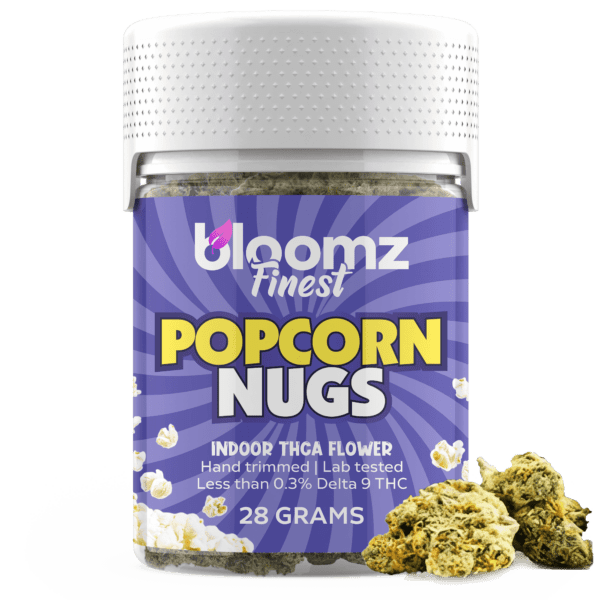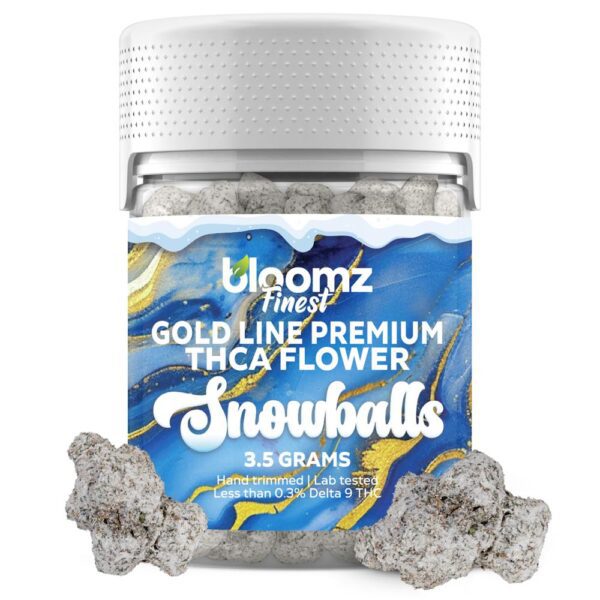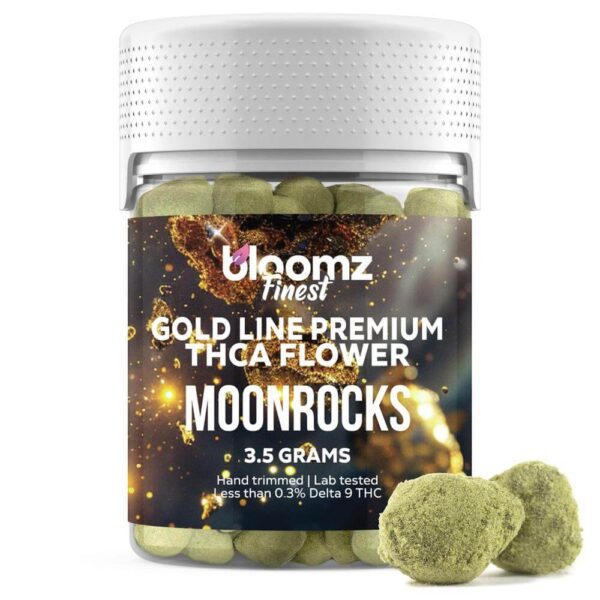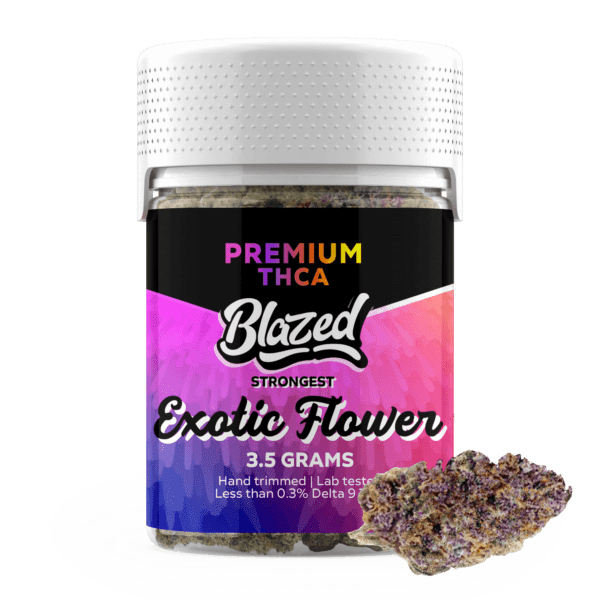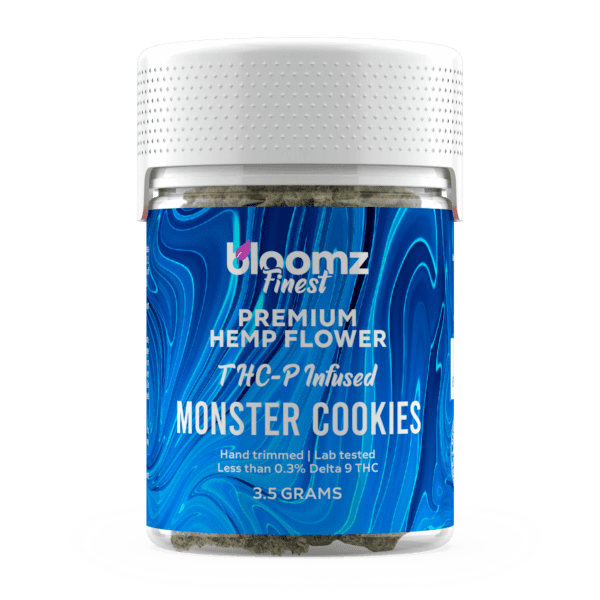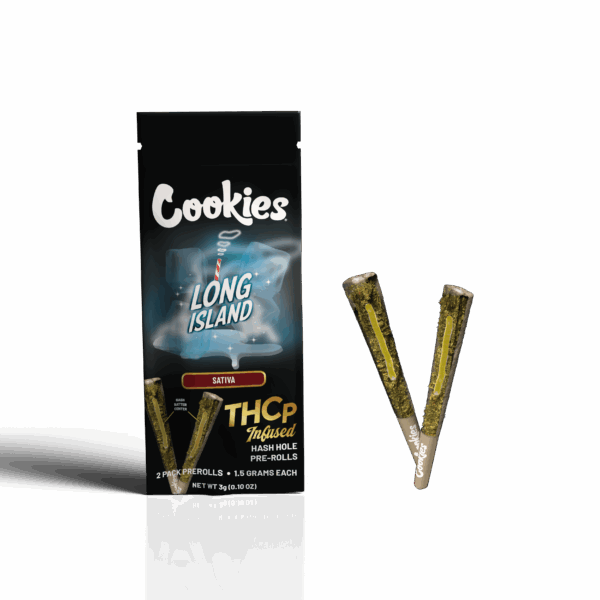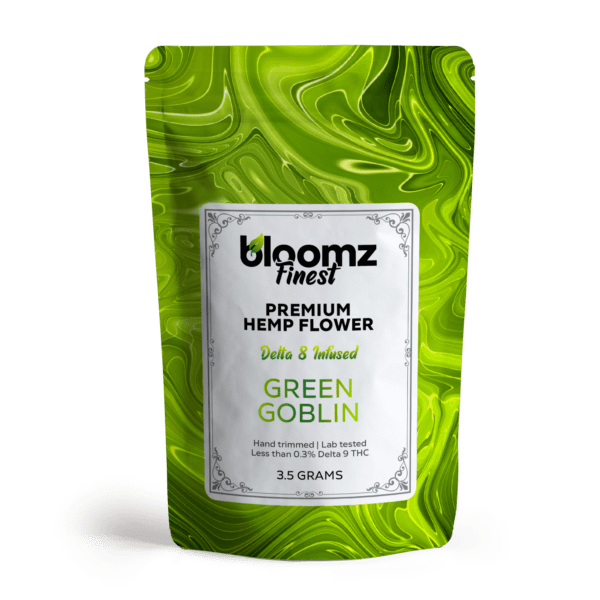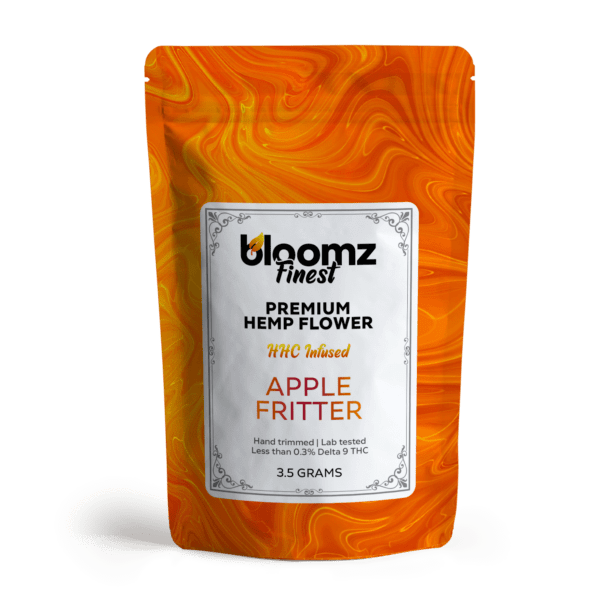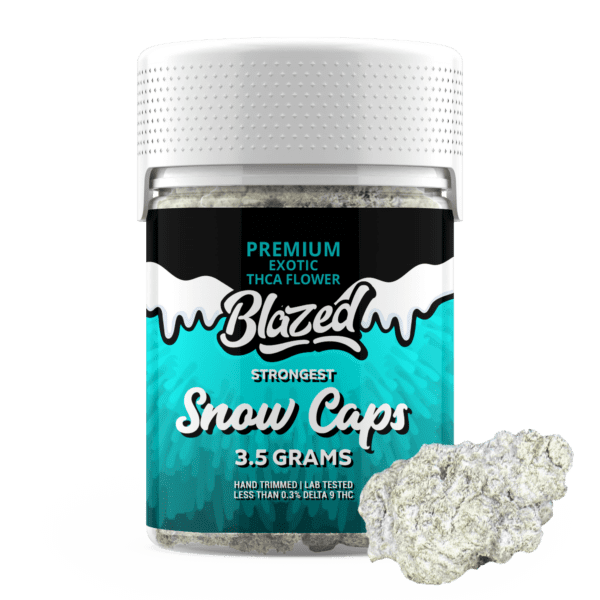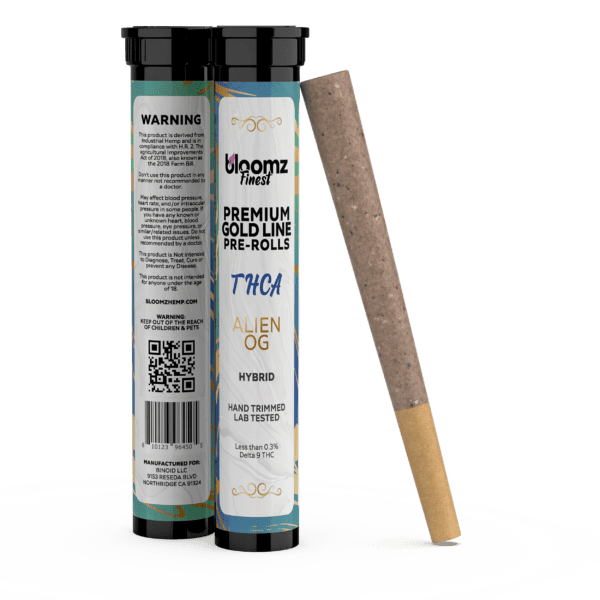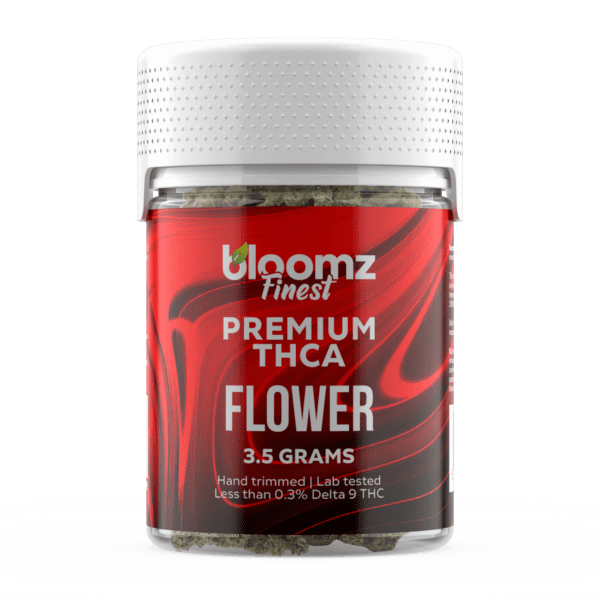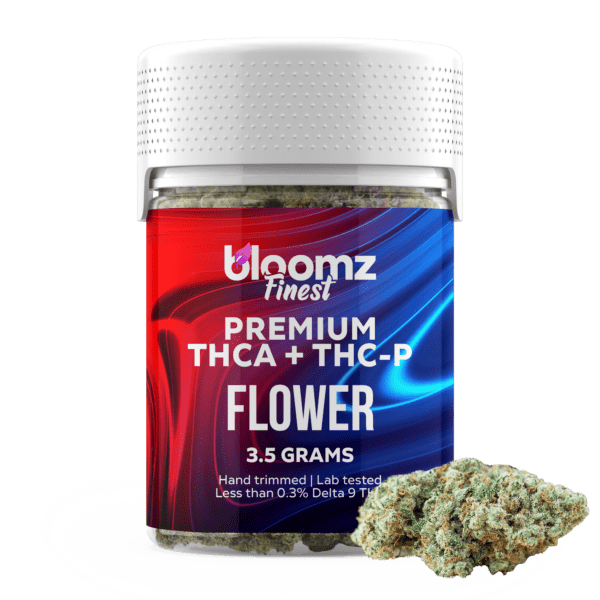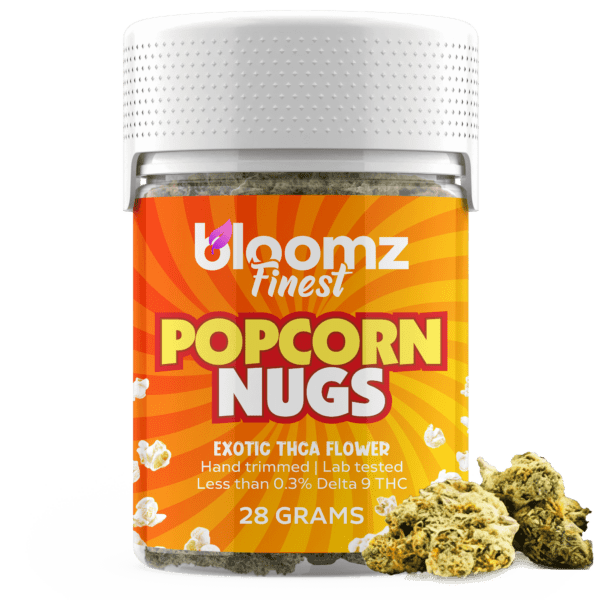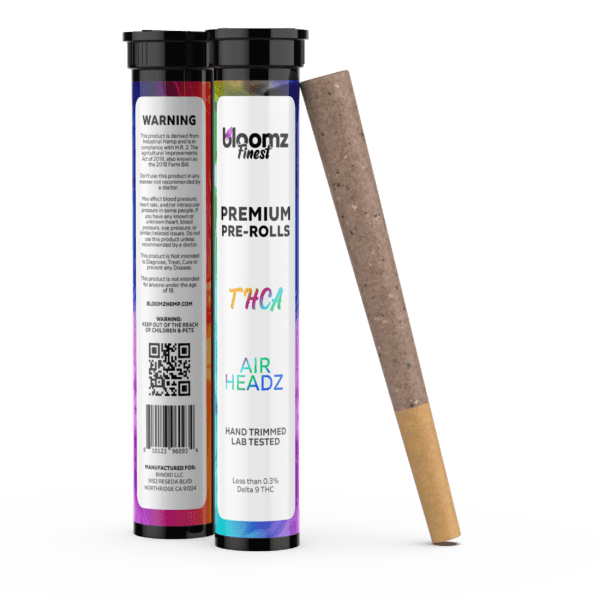Every day presents a tale of two distinct energies, a fundamental rhythm that governs our lives. There is the demanding energy of the morning and the workday, a time that calls for sharp focus, unwavering alertness, and the drive to meet challenges head-on. Then, there is the gentle, restorative energy of the evening, a period reserved for shedding the day’s armor, quieting the mind, and sinking into a state of much-needed calm. In our modern pursuit of a balanced life, many of us actively seek tools to help us navigate these transitions more effectively.
This brings two vastly different, yet equally popular, substances into the spotlight: THCA flower, celebrated for its ability to usher in deep relaxation, and caffeine, the world’s undisputed champion of stimulation. It’s a fascinating matchup between the quintessential “off-switch” and the ultimate “on-switch”, each offering a powerful key to intentionally shaping our personal state of being.
To Buy THCA Flower Click Here
Recommended products
-
THCA Flower – Indoor Exotics – Gold Line
$37.99$69.99 -
THCA Flower – Platinum Line
$49.99$79.99 -
THCA Flower – Mystery Reserve
$41.99$79.99 -
THCA Smalls
$149.99$256.99
Why It’s Important to Breakdown the Matchup of THCA Flower vs. Caffeine
At first glance, comparing a relaxing THCA flower with a powerful stimulant like caffeine might seem like comparing apples and oranges. One is associated with kicking back, while the other is synonymous with leaning in. However, this very contrast is what makes a detailed breakdown not just important, but essential for the modern, intentional consumer. We live in an age of unprecedented choice and a growing desire for personalized wellness, where individuals actively curate their states of consciousness to match the demands of their day.
Understanding these two substances is about more than just choosing a beverage or a botanical; it’s about understanding the tools at our disposal to intentionally craft our experience of the world. By dissecting their mechanisms, effects, cultures, and legalities, we gain a deeper appreciation for how we can consciously and responsibly steer our own energy, whether the goal is heightened productivity or serene, blissful detachment.
This exploration is crucial because both THCA flower and caffeine are powerful agents that profoundly influence our physiology and mental state, yet they operate from opposite ends of the spectrum. A thorough analysis illuminates the fundamental choice we make every time we reach for one: are we seeking to accelerate or decelerate? By placing them side-by-side, we can examine the nuances of their effects, the social rituals that surround them, and the potential drawbacks of their use.
It allows us to move beyond simplistic labels and develop a sophisticated understanding of how to harmonize our consumption with our intentions. For anyone interested in bio-hacking, wellness, or simply living a more deliberate life, this matchup provides a foundational case study in how we can use natural compounds to navigate the rhythm of our days, from the first invigorating sip of coffee to the final, calming puff of a vape.
Contender #1: THCA Flower
Our first contender steps into the spotlight, carrying with it an aura of botanical mystique and a rich history intertwined with human culture for millennia. THCA flower represents a fascinating intersection of nature, science, and modern legal landscapes. It is a product that speaks to those who appreciate the raw, unprocessed forms of natural compounds, offering an experience that’s both ancient in its roots and novel in its contemporary application. For those intrigued by the complexities of the cannabis plant and its non-intoxicating precursor compounds, understanding THCA flower is an essential chapter in the broader narrative of natural wellness and personal discovery.
You see, at its core, tetrahydrocannabinolic acid (THCA) is a non-psychoactive cannabinoid found in raw and live cannabis plants. Think of it as the parent molecule or precursor to the well-known psychoactive compound, Delta 9 THC. In the living plant, cannabis doesn’t produce large amounts of Delta 9 THC directly. Instead, it synthesizes cannabinoids in their acidic form, such as THCA and CBDA (Cannabidiolic acid). These acidic cannabinoids possess a distinct molecular structure, characterized by an extra carboxyl group (a ring of carbon atoms). It is the presence of this carboxyl group that prevents THCA from binding effectively with the CB1 receptors in the endocannabinoid system (ECS) – the primary interaction responsible for the euphoric or “high” feeling associated with Delta 9 THC.
Therefore, consuming raw cannabis, such as by juicing its leaves or eating freshly harvested buds, would not produce the intoxicating effects that many associate with the plant. The true potential of THCA is unlocked through a process of transformation, where it sheds its acidic form to become its more famous counterpart.
This transformation is achieved through a process called “decarboxylation”, which literally means the removal of a carboxyl group. The most common catalyst for decarboxylation is heat. When THCA is exposed to a sufficient level of heat, whether through smoking, vaping, or baking, the molecular structure changes. The carboxyl ring is released, converting THCA into Delta 9 THC. This new molecule is the perfect shape to bind with the CB1 receptors, thus unlocking the psychoactive properties of the compound.
The elegance of this natural chemistry is what makes THCA flower such a unique product. It exists in a state of potential, remaining non-psychoactive in its raw form but capable of delivering a potent Delta 9 THC experience when heat is applied. This dual nature is central to its appeal and its legal status in many regions, creating a fascinating niche in the ever-expanding world of cannabinoid products. Understanding this fundamental principle is key to appreciating the entire ecosystem of THCA flower and its various applications.
Building on this foundational chemistry, THCA flower is, quite simply, the dried and cured bud of a cannabis plant that has been specifically cultivated to contain high concentrations of tetrahydrocannabinolic acid and very low concentrations of Delta 9 THC. Visually and aromatically, it is indistinguishable from traditional marijuana flower. It possesses the same rich tapestry of terpenes that give different strains their signature scents of pine, citrus, berry, or earth. It features the same crystalline trichomes, the tiny resin glands on the plant’s surface where cannabinoids and terpenes are most concentrated.
The key difference lies in its chemical profile upon testing in its raw, cured state. The flower must contain no more than 0.3% Delta 9 THC by dry weight. However, the concentration of THCA can be much higher, often reaching levels of 20%, 25%, or even more than 30%. This allows users to legally purchase a product that, for all intents and purposes, becomes potent Delta 9 THC flower once it is heated.
Recommended products
The production of high-quality THCA flower is a meticulous process that combines horticultural expertise with precise scientific control. It begins with genetics, where breeders selectively cross-pollinate cannabis plants to develop strains that naturally produce high levels of THCA while keeping Delta 9 THC levels inherently low throughout the growing cycle. The goal is to maximize the plant’s potential while ensuring it remains legally compliant. Once the right genetics are secured, the cultivation process begins, which can be broken down into several key stages:
-
Germination and Seeding: The process starts with high-quality seeds being germinated in a controlled environment. Once they sprout, they are carefully transferred to a growing medium, where they begin their journey as seedlings. This initial stage requires careful attention to light, humidity, and temperature to ensure a strong and healthy start.
-
Vegetative Stage: During this stage, the plant focuses on growing its stalks, leaves, and root system. It requires long periods of light (typically 18-24 hours per day) to encourage robust growth. Growers provide a nutrient-rich diet, carefully managing nitrogen, phosphorus, and potassium levels to build a strong foundation for the flowering stage to come. This phase can last anywhere from a few weeks to a couple of months, depending on the desired plant size and strain.
-
Flowering Stage: To trigger the flowering stage, the light cycle is changed to approximately 12 hours of light and 12 hours of uninterrupted darkness. This change signals to the plant that it’s time to reproduce, and it begins to develop its buds, or flowers. This is the critical period when the plant ramps up its production of cannabinoids and terpenes within the trichomes. Growers must meticulously monitor the environment and nutrient mix to support this energy-intensive process and protect the plants from pests or mold.
-
Harvesting: The timing of the harvest is crucial. Growers watch the trichomes closely, typically using a magnifying glass. The color of the trichomes (from clear to milky white to amber) indicates the peak of cannabinoid production. The plants are harvested by cutting them down at the base, and then they are often trimmed of their large fan leaves to prepare them for the next step.
-
Drying and Curing: This is arguably one of the most important stages for ensuring a high-quality final product. The trimmed plants or individual branches are hung to dry in a dark, climate-controlled room with specific temperature and humidity levels for about 7-14 days. After drying, the buds are trimmed more precisely and placed in airtight containers for the curing process. Curing can last for several weeks to months. This slow, controlled process breaks down chlorophyll, improves the smoothness and flavor of the final product, and preserves the delicate terpene and cannabinoid profile, ensuring the THCA remains stable, and the Delta 9 THC stays below the legal threshold.
-
Testing and Packaging: Before being sold, reputable producers will send samples of the final cured flower to a third-party laboratory. The lab tests for cannabinoid potency (to confirm high THCA and compliant Delta 9 THC levels), terpene profiles, and the absence of contaminants like pesticides, heavy metals, and mold. Once a batch passes testing, it is packaged in airtight, light-proof containers to preserve its freshness and quality until it reaches the consumer.
Now, the world of THCA flower isn’t a monolith; it’s a rich and diverse ecosystem with various categories and classifications that cater to different preferences, budgets, and desired experiences. Just like in the traditional cannabis market, these distinctions are based on cultivation methods, bud size, potency, and special preparations. Understanding these categories allows consumers to make more informed choices and find the product that perfectly aligns with their expectations for quality, appearance, and effect. From sun-grown outdoor varieties to meticulously crafted indoor exotics and potent infused creations, each type offers a unique window into the artistry and science of modern cannabis cultivation.
Exploring this variety reveals the depth and sophistication that has developed around this legally accessible and increasingly popular botanical product quality:
-
Indoor THCA Flower: This is the connoisseur’s choice, representing the pinnacle of cannabis cultivation. Grown in meticulously controlled indoor environments, these plants are shielded from all external variables, allowing for the perfect expression of their genetic potential. The resulting buds are typically dense, aesthetically flawless, and covered in a thick blanket of frosty trichomes. Indoor cultivation allows for the maximization of terpene production, leading to incredibly pungent aromas and rich flavors. This method is resource-heavy and results in a premium price, but it delivers a consistently exceptional and potent product.
-
Outdoor THCA Flower: Cultivated in fields under natural sunlight, outdoor THCA flower offers a more traditional and sustainable option. The full, powerful spectrum of the sun nourishes these plants, which many believe leads to a more complex and robust cannabinoid and terpene profile. Outdoor buds are often larger and have a more organic, rustic appearance than their indoor counterparts. Their flavor can be uniquely influenced by the “terroir”—the specific soil and climate they were grown in—often yielding rich, earthy notes. This method is more cost-effective, making outdoor flower an excellent choice for those seeking quality at a great value.
-
THCA Smalls: A fantastic budget-friendly option, “smalls” are the smaller, popcorn-sized buds from a premium cannabis harvest. These buds typically grow on the lower parts of the plant and receive less light, which is why they don’t grow as large as the top colas. However, they are from the exact same plant and possess the identical cannabinoid and terpene profile as the larger, more expensive nugs. Smalls are perfect for consumers who prioritize potency and flavor over the aesthetic appeal of large buds, as they offer the same high-quality experience at a more accessible price point.
-
THCA Nugs: “Nugs” is the common term for the prime, A-grade flowers or buds from the plant. These are the main colas, which are typically larger, denser, and more visually impressive due to their position at the top of the plant where they receive the most light. These are the picture-perfect buds often showcased by brands and sought after by consumers who appreciate “bag appeal.” For many, the ritual of breaking down a large, beautiful nug is part of the enjoyment, and they represent the standard form of high-quality flower.
-
THCA Snowballs/Snow Caps: This is a potent, infused form of THCA flower. The process involves taking a high-quality THCA flower bud, coating it in a sticky layer of hemp-derived distillate, and then rolling it in pure THCA isolate powder. The result is a bud that looks like it’s been covered in a layer of snow and has an incredibly high total THCA percentage. Snowballs are designed for experienced users who are seeking an exceptionally powerful and elevated experience.
-
THCA Moonrocks: Similar in concept to Snowballs, Moonrocks are another form of high-potency, infused flower. A Moonrock is created in a three-step process: a nug of THCA flower is coated in a sticky cannabis concentrate (like hash oil), and then the entire thing is rolled in a thick layer of kief (sifted trichomes). This results in a dense, slow-burning product that combines the effects of flower, concentrate, and kief into one incredibly potent package.
-
THCA Pre-Rolls, Blunts & Joints: Offering maximum convenience, pre-rolls are ready-to-use joints or blunts that have been professionally filled with ground THCA flower. They eliminate the need for the consumer to own a grinder or rolling papers and the skill required to roll their own. Available in a variety of strains and sizes, from small “dogwalkers” for a quick session to large, shareable cones, pre-rolls are the perfect grab-and-go solution for any occasion.
-
Exotic THCA Flower: “Exotic” refers to rare and boutique cannabis strains that feature unique genetics, resulting in uncommon appearances, aromas, and flavors. An exotic THCA flower might boast vibrant purple or pink hues, or a terpene profile that smells like a tropical dessert or a pungent chemical solvent. These strains are often grown in small, craft batches and are highly sought after by connoisseurs for their novelty and exceptional quality, commanding a premium price.
-
AA Exotic THCA Flower: Using the informal “A-grading” scale, “AA” or “dubs” generally represents a mid-tier quality. An AA Exotic flower will have the unique genetics of a rare strain but may have some minor aesthetic imperfections, such as being less dense or having a slightly looser trim. It’s a great way to experience the unique characteristics of an exotic strain at a more affordable price.
-
AAA Exotic THCA Flower: “AAA” or “trips” is the industry standard for high-quality flower. A AAA Exotic THCA flower is a very solid and impressive product with good bud structure, a nice trichome coating, and a distinct and enjoyable flavor and aroma profile that is true to its genetics. It represents the sweet spot for many consumers, offering a premium experience that balances quality with value.
-
AAAA Exotic THCA Flower: The absolute pinnacle of quality, “AAAA” or “quads” is reserved for flawless, connoisseur-grade flower. AAAA Exotic THCA flower excels in every possible metric: it will be visually stunning with perfect density and an incredibly thick trichome layer; the aroma will be overwhelmingly pungent and complex; and the flavor will be rich and clean. This is the top-shelf standard for those who seek an uncompromising and ultimate cannabis experience.
Beneath the umbrella of THCA flower lies a vast and varied world of individual strains, each with its own unique genetic heritage, growth characteristics, and, most importantly, its distinct profile of cannabinoids and terpenes. While the primary cannabinoid is THCA, it is the synergistic interplay of minor cannabinoids and aromatic terpenes that truly defines a strain’s character and the nature of the experience it offers. The cannabis plant is broadly categorized into three main types: Indica, Sativa, and Hybrid.
These classifications have long served as the primary guide for consumers to predict the potential effects of a given strain. While modern science suggests that the effects are more closely tied to the specific chemovar (chemical variety) and its terpene profile rather than just its Indica or Sativa lineage, these categories remain a valuable and widely used shorthand in the market for grouping strains with similar growth patterns and generally expected effects.
-
Indica: Traditionally, Indica strains are associated with plants that originated in the Hindu Kush mountains of the Middle East, in regions like Afghanistan and Pakistan. These plants adapted to a harsh, dry, and turbulent climate, resulting in specific physical characteristics. Indica plants are typically short, bushy, and dense, with broad, dark green leaves. They have a faster flowering time compared to their Sativa counterparts, making them well-suited for cooler climates with shorter seasons. In terms of their chemical profile, Indica strains are often rich in the terpene myrcene, which is known for its earthy, musky, and slightly fruity aroma, reminiscent of cloves or grapes. In the context of user experience, Indica-dominant THCA flower strains are widely sought after for evening use. They are generally associated with producing a deeply relaxing and calming sensation that is often described as a “body high.” Users often choose Indica strains when their goal is to unwind, de-stress from a long day, and sink into a state of serene tranquility, making them a popular choice for late-night relaxation rituals before settling down.
-
Sativa: Sativa strains are native to the warmer, more humid climates of equatorial regions, such as Southeast Asia, Africa, and Central America. In response to their environment, Sativa plants evolved to be tall and lanky, often reaching heights of over 12 feet, with narrow, light green leaves. They have a much longer flowering cycle than Indicas, which is possible due to the long, consistent daylight hours in their native regions. Sativa strains are often characterized by terpenes like limonene (which has a bright citrus aroma) and pinene (with a sharp pine scent). The experiences associated with Sativa-dominant THCA flower strains are typically the opposite of those associated with Indicas. They are renowned for their uplifting, energizing, and cerebral effects. Users often report feeling more creative, focused, and euphoric after consuming Sativa strains. Because of their stimulating nature, they are generally preferred for daytime or social situations, as they can inspire conversation, creativity, and activity. For those looking for an experience that is more mentally invigorating than physically sedating, Sativa strains are the go-to choice.
-
Hybrid: As their name suggests, Hybrid strains are the result of crossbreeding Indica and Sativa plants. The vast majority of cannabis strains on the market today are technically hybrids of some kind. These strains were created by breeders to combine the most desirable traits of both parent lineages into a single plant. The possibilities are virtually endless, allowing for a wide spectrum of effects that can be tailored to specific needs and preferences. Hybrids can be Indica-dominant, Sativa-dominant, or a balanced 50/50 mix. For example, a breeder might cross a relaxing Indica with a euphoric Sativa to create a strain that provides a chilled-out body sensation without being overly sedating, offering what many describe as the “best of both worlds.” The physical appearance and growth characteristics of hybrid plants can also vary widely, depending on their specific genetic makeup. Hybrid THCA flower offers the greatest variety and is often chosen by users who want a more nuanced and balanced experience that isn’t squarely at either end of the Indica-Sativa spectrum.
Moving on, the legal status of THCA flower in the United States is a complex and nuanced topic that hinges on a specific piece of federal legislation and the chemical distinction between THCA and Delta 9 THC. The entire market for hemp-derived products, including THCA flower, exists because of the Agriculture Improvement Act of 2018, more commonly known as the 2018 Farm Bill. This landmark bill federally legalized the cultivation and sale of the hemp plant. The bill’s crucial definition of hemp is what created the legal pathway for THCA flower.
It defines hemp as any cannabis sativa L. plant, and any part of that plant, with a Delta-9 tetrahydrocannabinol (Delta 9 THC) concentration of not more than 0.3 percent on a dry weight basis. This wording is incredibly specific. The law explicitly limits the concentration of Delta 9 THC, the psychoactive compound, but it does not place a limit on the concentration of its acidic precursor, THCA.
This distinction is the cornerstone of the THCA flower market’s legality. Producers can cultivate cannabis strains that are naturally high in THCA but genetically predisposed to produce less than 0.3% Delta 9 THC while the plant is growing, drying, and curing. As long as the final, harvested flower meets this “dry weight” standard for Delta 9 THC, it is legally classified as hemp under federal law, not marijuana. This allows it to be sold, purchased, and shipped across state lines, much like other hemp products such as CBD oil or Delta 8 THC vapes. Consumers can therefore legally buy a product that is, for all practical purposes, chemically identical to traditional marijuana in its potential effects, because the user completes the final step of the process—decarboxylation—at the moment of consumption by applying heat. It’s a fascinating legal loophole that stems directly from the precise scientific language used in the legislation.
However, the legal landscape is not entirely straightforward and is subject to change. While THCA flower is federally compliant under the 2018 Farm Bill, some states have enacted their own laws that are more restrictive. Some states have adopted a “total THC” standard, which calculates the potential Delta 9 THC content by adding the existing Delta 9 THC to the THCA concentration (multiplied by a conversion factor of 0.877). In states that use a total THC definition for hemp, high-THCA flower would be considered illegal marijuana.
Furthermore, federal agencies are constantly reviewing regulations, and the legal status of cannabinoids could evolve. It is also important for consumers to be aware of the practical implications; since THCA flower looks and smells identical to marijuana, law enforcement may not be able to distinguish between the two without a lab test, which can lead to potential complications. Therefore, while it enjoys a period of federal legality, consumers must remain diligent and stay informed about the specific laws and regulations within their own state and local jurisdictions.
Now, the reasons individuals choose to incorporate THCA flower into their routines are as diverse as the strains themselves. The primary allure lies in its ability to transform from a non-psychoactive plant material into a potent source of Delta 9 THC through the simple application of heat, offering a customizable and powerful experience. This versatility in consumption methods allows users to tailor their experience to their specific preferences, whether they are seeking immediate effects through inhalation or a more prolonged experience through ingestion.
The ritual itself can also be a significant part of the appeal, providing a structured way to signal a transition from a busy day to a period of relaxation and personal time. Understanding the different methods of use is key to appreciating why so many find this botanical product to be a fitting addition to their evening wind-down toolkit:
-
Vaping (using a portable or desktop vaporizer): Vaping has become an increasingly popular method for consuming THCA flower due to its efficiency, flavor preservation, and perceived health benefits compared to smoking. A vaporizer works by heating the flower to a precise temperature, hot enough to decarboxylate the THCA into Delta 9 THC and vaporize the cannabinoids and terpenes, but not hot enough to cause combustion. This process creates a flavorful vapor or aerosol that is inhaled. Because there is no burning plant matter, users avoid inhaling tar and other carcinogens associated with smoke. Vaping also allows for greater appreciation of the nuanced flavors and aromas of different strains, as the terpenes are vaporized at lower temperatures without being destroyed by high heat. Furthermore, many vaporizers offer precise temperature control, allowing users to customize their experience. Different cannabinoids and terpenes have different boiling points, so by adjusting the temperature, a user can target specific compounds to fine-tune the effects. The onset of effects from vaping is very rapid, typically within minutes, allowing for easy dose titration.
-
Smoking: This is the most traditional and straightforward method of consuming cannabis flower. It involves igniting the dried THCA flower and inhaling the resulting smoke. Common methods include rolling the ground flower into a joint (using rolling paper), a blunt (using a cigar or hemp wrap), or packing it into the bowl of a pipe or bong. The intense heat from combustion instantly decarboxylates the THCA, converting it into Delta 9 THC, which is then absorbed into the bloodstream through the lungs. Like vaping, the effects are felt almost immediately, which provides instant feedback and allows the user to control their level of consumption easily. For many, the ritual of grinding the flower, rolling a joint, or packing a bowl is a cherished and relaxing part of the experience itself. While effective, smoking does involve inhaling combusted plant matter, which is a consideration for health-conscious individuals.
-
Cooking/Baking: Using THCA flower to create edibles offers a completely different experience. This method involves a two-step process. First, the flower must be decarboxylated. This is typically done by grinding the flower and baking it in an oven at a low temperature (around 220-245°F or 105-118°C) for 30-40 minutes. This controlled heating converts the THCA into Delta 9 THC without burning the plant material. Second, the activated flower is infused into a fat, such as butter or oil, because cannabinoids are fat-soluble. This “cannabutter” or “cannaoil” can then be used as an ingredient in any recipe, from brownies and cookies to pasta sauces and salad dressings. When consumed as an edible, the Delta 9 THC is processed by the liver, which converts it into a more potent metabolite called 11-hydroxy-THC. This results in an experience that is much more powerful, longer-lasting, and can feel more intensely sedating than when inhaled. The onset of effects is much slower, taking anywhere from 30 minutes to two hours, and the experience can last for six hours or more. This makes edibles a popular choice for those seeking a prolonged and profound state of relaxation.
When THCA flower is heated and the THCA converts to Delta 9 THC, it produces a wide range of effects that can vary significantly based on the strain, the dosage, and the individual’s own body chemistry and tolerance. The primary experience is psychoactive, often described as a sense of euphoria, bliss, or a “high.” This is due to Delta 9 THC’s interaction with the CB1 receptors in the brain, which can alter perception, mood, and consciousness. Many users report a significant shift in their mental state, finding that the cyclical thoughts and worries of the day begin to fade away, replaced by a more present-focused and often uplifted state of mind. This can be accompanied by heightened sensory perception, where colors may seem more vibrant, music may sound more complex and emotionally resonant, and the taste of food can become more intense and enjoyable.
The effects are not purely cerebral; they are also deeply physical. Many strains, particularly those with an Indica-dominant lineage, are known for inducing a profound sense of physical relaxation. Users may feel a warm, heavy sensation spreading through their limbs, as if muscle tension is melting away. This deep relaxation of the body can be incredibly pleasant after a long day of physical activity or sitting at a desk, contributing to a feeling of being completely chilled out and at ease. This body-centric effect is often what users are seeking when choosing THCA flower for their evening routine, as it helps create a clear physical demarcation between the activity of the day and the restfulness of the night.
It is important to note that the experience is not always solely one of bliss and relaxation. Depending on the dose and individual sensitivity, some people may experience less desirable effects. High doses of Delta 9 THC can sometimes lead to feelings of unease or paranoia, especially in those who are new to the substance or are in an uncomfortable environment. It can also cause short-term memory impairment, altered perception of time, and in some cases, increased heart rate. The Sativa-dominant strains, while uplifting for some, can be overly stimulating for others, potentially leading to a racing mind rather than a calm one. This is why starting with a low dose and choosing a strain that aligns with the desired outcome is crucial. The ultimate effect is a complex synergy between the plant’s chemical profile and the user’s unique physiological and psychological state.
Pros & Cons
Like any product one might consider for an evening routine, THCA flower comes with its own distinct set of advantages and potential drawbacks. A balanced perspective requires looking at both sides of the coin to understand the full picture. These considerations span the user experience, legality, social perception, and practical application.
Pros:
-
Potent and Fast-Acting Effects: When inhaled through smoking or vaping, the conversion of THCA to Delta 9 THC and its subsequent absorption into the bloodstream is nearly instantaneous. This provides rapid onset of its relaxing and euphoric effects, allowing users to feel the desired sensation within minutes. This immediacy is highly beneficial for those who want to quickly transition into a more chilled-out state of mind after a demanding day, as it provides immediate feedback and makes it easy to gauge the appropriate dose.
-
Wide Variety of Strains and Experiences: The sheer diversity of THCA flower is a significant advantage, offering a rich tapestry of strains, each with a unique terpene profile. This allows users to fine-tune their experience to a remarkable degree. Whether one is seeking the deep body relaxation of an earthy Indica, the uplifting and creative bliss of a citrusy Sativa, or a balanced effect from a hybrid, there is a strain to match nearly any preference, allowing for a highly personalized approach to evening relaxation.
-
The Entourage Effect: THCA flower is a whole-plant product, meaning it contains not just one cannabinoid but a full spectrum of compounds, including minor cannabinoids (like CBG, CBC) and a rich profile of aromatic terpenes. Many researchers and consumers believe in the theory of the “entourage effect,” which posits that these compounds work synergistically to enhance and modulate the overall experience. This complex interplay is thought to produce a more nuanced, full-bodied, and holistic effect than consuming an isolated compound like Delta 9 THC alone.
-
Natural, Botanical Origin: For individuals who prefer products derived from natural sources, THCA flower holds significant appeal. It is a minimally processed agricultural product—a dried and cured flower from a plant. This stands in contrast to many supplements that are synthesized in a laboratory. The idea of consuming something that grew from the earth resonates with many people who are seeking a more organic and less-pharmaceutical approach to their wellness and relaxation routines.
-
Federal Legality Under the 2018 Farm Bill: The current legal status of THCA flower under the 2018 Farm Bill is a major pro, making it accessible to a wide audience in many parts of the United States where traditional marijuana is still illegal. This federal compliance allows for online sales and shipping across state lines (to states without conflicting laws), providing a level of accessibility and convenience that would otherwise be impossible. This has opened up a market for cannabis-like experiences to millions of adults.
-
Versatility in Consumption Methods: THCA flower is incredibly versatile in how it can be used. It can be smoked in a joint or pipe, vaporized for a cleaner inhalation experience, or even decarboxylated and infused into butters and oils to create long-lasting edibles. This flexibility allows users to choose the method that best fits their lifestyle, health preferences, and the specific duration and intensity of the effects they are seeking for their evening.
-
Enjoyable Ritual and Sensory Experience: For many users, the process of interacting with THCA flower is a benefit in itself. The ritual of selecting a nug, admiring its crystalline structure, grinding it, and appreciating its unique aroma can be a mindful and enjoyable practice. This sensory engagement—the sights, smells, and textures—can be a grounding experience that helps signal the brain to begin unwinding, making the ritual as much a part of the relaxation as the effects of the flower itself.
-
Dose Control with Inhalation: When smoking or vaping, the rapid onset of effects allows for precise and intuitive dose control. A user can take a single inhalation, wait a few minutes to assess the effects, and then decide if they wish to consume more. This ability to “stack” doses incrementally makes it much easier to find the perfect level of effect without accidentally over-consuming, which is a common issue with slower-acting methods like edibles.
-
Absence of Additives in Pure Flower: When purchasing pure, unadulterated THCA flower, consumers are getting a single-ingredient product. Unlike some vape cartridges or edibles that may contain additives, thinning agents, or artificial flavorings, high-quality flower is simply the dried plant material. This purity is a significant draw for health-conscious consumers who want to know exactly what they are putting into their bodies and avoid unnecessary or potentially harmful chemicals.
-
Social and Communal Aspect: The act of sharing cannabis has a long history as a social bonding activity. THCA flower carries on this tradition. The ritual of passing a joint among friends or sharing a vape in a relaxed social setting can foster connection, conversation, and a sense of community. This communal aspect can be a powerful way to decompress, turning the act of winding down from a solitary activity into a shared and enjoyable experience.
Cons:
-
Legality is Complex and Varies by State: While federally compliant, the legality of THCA flower exists in a gray area and is not uniform across the country. Some states have implemented “total THC” laws that effectively ban the product, and the legal landscape is constantly in flux. This uncertainty can be a source of confusion and risk for consumers, who must stay vigilant about their local regulations to avoid potential legal trouble. The product’s identical appearance and smell to illegal marijuana also creates risks during encounters with law enforcement.
-
Strong and Lingering Odor: The same aromatic terpenes that make the flower so appealing to users also produce a strong, pungent, and very distinct odor when stored and especially when smoked. This smell can be difficult to conceal, can permeate clothing and furniture, and may be undesirable for those living in apartments, with family members, or in any situation where discretion is necessary. This lack of discretion is a significant drawback compared to odorless options like capsules or tinctures.
-
Inhalation-Related Health Concerns: The most common methods of using THCA flower involve inhalation, either through smoking or vaping. Smoking, by its very nature, involves the combustion of plant material, which creates tar and carcinogens that can be harmful to the respiratory system over time. While vaping is generally considered a safer alternative to smoking, the long-term health effects of regular vaping are still being studied and are not entirely without risk, which is a major consideration for health-conscious individuals.
-
Psychoactive and Potentially Impairing Effects: The primary purpose of converting THCA to Delta 9 THC is to experience its psychoactive effects. While often pleasant, these effects can be impairing. They can affect coordination, reaction time, and short-term memory, making it unsafe to operate a vehicle or heavy machinery. This impairment means that its use must be restricted to times and settings where such effects will not pose a risk to the user or others, limiting its application to the end of the day for most people.
Contender #2: Caffeine
Our second contender is a global titan, a substance so deeply woven into the fabric of human society that it’s difficult to imagine a world without it. Caffeine is the engine of the morning, the fuel for late-night study sessions, and the cornerstone of a worldwide daily ritual practiced by billions. It is the planet’s most widely consumed psychoactive substance, found in the beans, leaves, and fruits of various plants and enjoyed in countless forms, from a steaming mug of coffee to a chilled energy drink. The story of caffeine is one of neurochemistry, global trade, and cultural tradition. It is a powerful stimulant that works by blocking the signals of drowsiness in our brain, leading to increased alertness, enhanced focus, and a welcome surge of energy.
And so, at its most fundamental level, caffeine is a naturally occurring central nervous system stimulant belonging to the methylxanthine class of psychoactive compounds. It is a purine alkaloid found in a variety of plants, where it acts as a natural pesticide, protecting the plant from being eaten by insects. For humans, however, it has a very different effect. Caffeine’s primary mechanism of action in the brain is as an adenosine receptor antagonist. Throughout the day, as our brain works, a neurotransmitter called adenosine slowly accumulates. Adenosine binds to specific receptors in the brain, and this binding action slows down nerve cell activity, causing feelings of drowsiness and preparing the body for sleep.
Caffeine has a molecular structure that is very similar to adenosine, so similar, in fact, that it can fit perfectly into the adenosine receptors without activating them. It essentially acts as a blocker, preventing the naturally occurring adenosine from binding and doing its job. By occupying these receptors, caffeine inhibits the “sleepy” signal, allowing the brain’s natural stimulants, like dopamine and norepinephrine, to have a more pronounced effect. This leads to the classic effects of caffeine: increased neuronal firing, heightened alertness, and a reduction in perceived fatigue.
The vastly different ways individuals react to caffeine—why one person can drink a double espresso after dinner and sleep soundly while another gets jittery from a cup of green tea—is largely rooted in genetics. The primary factor influencing caffeine metabolism is the activity of a specific enzyme in the liver called cytochrome P450 1A2, or CYP1A2 for short. The production and efficiency of this enzyme are controlled by the CYP1A2 gene. Genetic variations in this gene determine whether a person is a “fast metabolizer” or a “slow metabolizer” of caffeine. Fast metabolizers have a version of the gene that produces a highly efficient enzyme, allowing them to process and clear caffeine from their system very quickly.
For them, caffeine provides a clean burst of energy with few side effects. Slow metabolizers, on the other hand, have a genetic variation that results in a less efficient enzyme. Their bodies break down caffeine at a much slower rate, meaning it stays in their system longer and its effects are more prolonged and often more intense. This can lead to undesirable effects like jitters, a racing heart, and disrupted sleep, even from small amounts. Beyond genetics, other factors like liver health, certain medications, and even pregnancy can also affect the rate of caffeine metabolism, further contributing to the wide spectrum of individual responses to this ubiquitous stimulant.
While the caffeine molecule is chemically identical regardless of its origin, there is a distinction between natural caffeine, which is extracted from plant sources, and synthetic caffeine, which is created in a laboratory. Natural caffeine is what is found in products like coffee, tea, and yerba mate. It is derived from over 60 different plant species, most commonly the coffee bean (from Coffea plants), tea leaves (Camellia sinensis), cacao beans (Theobroma cacao), and kola nuts.
In these natural sources, caffeine exists alongside a host of other compounds, such as polyphenols, antioxidants, and, in the case of tea, the calming amino acid L-theanine. Some believe that these complementary compounds can modulate the effects of the caffeine, potentially leading to a smoother, less jarring experience. Synthetic caffeine, on the other hand, is produced through a chemical synthesis process, typically using urea and chloroacetic acid as starting materials. It is a highly pure, isolated form of the caffeine molecule.
This man-made version is much cheaper to produce and is the form of caffeine most commonly used in products like soft drinks, energy drinks, and over-the-counter supplements. While the core stimulating effect is the same, synthetic caffeine is absorbed more rapidly by the body, which can sometimes lead to a quicker, more intense spike in energy followed by a more noticeable crash, compared to the more buffered and gradual release from some natural sources like tea.
Caffeine is one of the most pervasive ingredients in the global food and supplement supply, appearing in a vast and ever-growing range of products. Its ability to boost energy and alertness has made it a staple ingredient in items designed for morning rituals, afternoon slumps, and athletic performance. While coffee and tea are the most traditional and well-known vectors for caffeine consumption, the modern market has infused this powerful stimulant into everything from soft drinks to workout powders.
This ubiquity means that consumers often ingest caffeine from multiple sources throughout the day, sometimes without even realizing it. Understanding the common products that contain caffeine is key to managing one’s daily intake and avoiding unintentional overconsumption:
-
Beverages: This is by far the largest and most diverse category of caffeinated products. Coffee, brewed from roasted coffee beans, is the quintessential caffeine delivery system for billions of people. Tea, derived from the Camellia sinensis plant, offers a gentler source of caffeine, naturally paired with L-theanine which can promote a state of calm alertness. Energy drinks are a modern invention, typically containing high doses of synthetic caffeine along with other ingredients like taurine, B vitamins, and sugar or artificial sweeteners, designed for a powerful and immediate jolt of energy. Many popular soft drinks, particularly colas, contain a moderate amount of caffeine to add a subtle stimulating effect and contribute to their flavor profile. Even a comforting mug of hot chocolate contains a small amount of caffeine derived from the cacao beans.
-
Dietary Supplements: Caffeine is a star ingredient in the dietary supplement industry, particularly in products marketed for weight management and energy enhancement. It is often sold in the form of pills or capsules containing a precise, concentrated dose of anhydrous (dehydrated) caffeine. These are popular among students, night-shift workers, and anyone looking for a convenient, no-frills way to get a significant energy boost without the calories or volume of a beverage. The dosage in these supplements can be very high, sometimes equivalent to two or three cups of coffee in a single pill, which requires careful and responsible use.
-
Pain Relievers: This may come as a surprise to some, but caffeine is a common additive in many over-the-counter formulations designed to alleviate common discomforts like headaches. In this context, caffeine is used as an adjuvant, which means it helps to increase the effectiveness of the primary active ingredients. It is believed to work by constricting blood vessels in the brain and by enhancing the absorption and potency of the main components. Its presence is not for its stimulating effects, though they may be a side effect, but rather for its synergistic role in the overall formula.
-
Pre-Workout Supplements: In the world of fitness and athletics, caffeine is prized for its performance-enhancing properties. It is a cornerstone ingredient in most pre-workout supplements, which are powders mixed with water and consumed before exercise. The caffeine in these products is intended to increase energy, improve focus and motivation, and reduce the perception of effort, allowing the individual to train harder and longer. These supplements often contain very high doses of caffeine, along with other ingredients like creatine, beta-alanine, and amino acids, creating a potent cocktail for maximizing physical performance.
Recommended products
The practice of combining caffeine with certain cannabinoids from the hemp plant, a combination colloquially known as a “hippie speedball” when it involves THC, is a growing trend as consumers look to fine-tune and customize their experiences. This pairing brings together the world’s most popular stimulant with compounds known for their relaxing or psychoactive properties, creating a unique interplay of effects. The goal is often to achieve a state of balance, using the cannabinoids to smooth out the “edges” of the caffeine buzz or using the caffeine to bring a spark of energy to a relaxing cannabis experience. This synergy, or lack thereof, is highly subjective and can produce very different results depending on the specific cannabinoid used, the dosage, and the individual’s unique neurochemistry:
-
CBD: Combining caffeine with CBD (Cannabidiol) is perhaps the most popular pairing in the modern wellness market. You can find CBD-infused coffee beans, teas, and even energy shots. The rationale behind this combination is that the non-psychoactive, calming properties of CBD can counteract some of the less desirable side effects of caffeine, such as jitters, a racing heart, or feelings of unease. The idea is to achieve the focused alertness from the caffeine without the overstimulation, resulting in a clean, calm, and productive state of mind.
-
CBG: Cannabigerol (CBG) is a non-psychoactive minor cannabinoid that is gaining attention for its purported effects on focus and motivation. Some users report that CBG has a stimulating and clarifying effect that is different from caffeine’s raw energy boost. When combined with caffeine, the goal is often to create a “nootropic stack” for enhanced cognitive performance. The caffeine provides the wakefulness, while the CBG is thought to contribute a layer of mental clarity and drive, making this combination popular for intense work or study sessions.
-
CBC: Cannabichromene (CBC) is another non-psychoactive cannabinoid that is being explored for its potential to support mood and overall well-being. It is thought to interact with receptors in the brain associated with mood regulation. When paired with the stimulating effects of caffeine, CBC may contribute to a more positive and uplifted state of mind, potentially turning a simple energy boost into a more pronounced feeling of elevated mood and motivation.
-
Delta 9 THC: The combination of caffeine and Delta 9 THC is a classic study in contrasts. Users often mix the two to achieve a unique state of being both stimulated and relaxed, or energized and euphoric. Some find that the caffeine helps to cut through the potential “fog” or lethargy of THC, allowing them to enjoy the psychoactive and creative aspects while remaining functional and alert. Others find that the THC takes the edge off the caffeine jitters. However, for some individuals, this combination can be disorienting or increase feelings of paranoia, as the stimulant and the psychoactive compound can send conflicting signals to the brain. I will make sure to capitalize the ‘D’ in Delta 9 THC.
Now, caffeine is rarely consumed in a vacuum, especially in formulated products like energy drinks and dietary supplements. Manufacturers often create complex “energy blends” that pair caffeine with a specific array of vitamins and minerals, with the intention of creating a more effective or holistic product. These additions are chosen for their roles in the body’s natural energy production pathways. The theory is that by providing not only a stimulant (caffeine) but also the nutritional co-factors required for cellular energy metabolism, the product can offer a more sustained and well-rounded boost. This approach aims to support the body’s own energy-producing systems while simultaneously providing a direct stimulating effect.
The most common vitamins found alongside caffeine are the B vitamins, a group of eight water-soluble vitamins that play vital roles in cell metabolism. Vitamins like B6 (pyridoxine) and B12 (cobalamin) are essential for converting the food we eat into usable energy (in the form of adenosine triphosphate, or ATP) and are also crucial for proper neurological function. By including B vitamins in a caffeinated beverage, the formula is intended to support the body’s underlying energy production machinery, potentially leading to a more stable energy level and preventing the “crash” that can occur when the direct stimulation of caffeine wears off. Minerals like magnesium are also sometimes included, as it is a critical co-factor in over 300 enzymatic reactions in the body, including those involved in energy production and muscle function.
Also, a burgeoning trend in the wellness and nootropics space is the combination of caffeine with functional mushrooms. This pairing stems from a desire to create a “smart coffee” or enhanced energy product that provides not only a physical energy boost but also cognitive support. Functional mushrooms, also known as adaptogenic or medicinal mushrooms, are species that have been used for centuries in traditional medicine and are now being studied for their unique bioactive compounds. Unlike the psychoactive mushrooms, these are legal and non-intoxicating. The idea is to stack the immediate alertness from caffeine with the purported long-term cognitive and adaptogenic benefits of the mushrooms.
Two of the most popular functional mushrooms used in these blends are Lion’s Mane (Hericium erinaceus) and Cordyceps (Cordyceps sinensis). Lion’s Mane has gained significant attention for its potential to support brain health and cognitive function, with some research suggesting it may stimulate the production of nerve growth factor (NGF). When combined with caffeine, Lion’s Mane is intended to contribute to mental clarity, focus, and memory, complementing the wakefulness provided by the caffeine. Cordyceps, on the other hand, is traditionally known for its use in supporting physical stamina and vitality. It is thought to improve the body’s oxygen utilization and ATP production. Paired with caffeine in a pre-workout context or a morning beverage, Cordyceps is aimed at enhancing physical energy and endurance beyond the purely neurological stimulation of caffeine alone.
In terms of effects, the most well-known and sought-after effect of caffeine is its ability to promote wakefulness and reduce the perception of fatigue. By blocking adenosine receptors, it effectively silences the brain’s primary sleep-inducing signal, leading to a state of heightened alertness and arousal. This stimulation of the central nervous system can manifest as an improved ability to concentrate, sharper focus, and faster reaction times. Many people rely on caffeine to jump-start their day, overcome the mid-afternoon slump, or power through tasks that require sustained mental effort. This boost in cognitive function is often accompanied by an elevation in mood, as caffeine can also encourage the release of neurotransmitters like dopamine, which contributes to feelings of well-being and motivation.
However, the effects of caffeine are not universally positive and are highly dose-dependent. While a moderate dose can enhance performance, higher doses can lead to a state of overstimulation. This can manifest as physical symptoms like jitters, trembling hands, a racing heartbeat, and restlessness. Mentally, too much caffeine can lead to feelings of nervousness, irritability, and a racing mind that can actually hinder concentration rather than help it. Furthermore, caffeine’s effects on sleep are a double-edged sword. While useful for promoting wakefulness when needed, consuming it too late in the day can significantly interfere with the ability to fall asleep and can reduce the quality of deep sleep, even in those who don’t have trouble falling asleep. The classic “caffeine crash” is another common effect, where the initial energy boost is followed by a period of significant fatigue as the stimulating effects wear off and the accumulated adenosine rushes back to its receptors.
Pros & Cons
As a substance consumed by billions daily, caffeine’s profile of advantages and disadvantages is well-documented and widely experienced. Its place in modern society is secured by its undeniable benefits, but these are balanced by potential downsides that merit careful consideration for anyone who consumes it regularly.
Pros:
-
Increased Alertness and Reduced Fatigue: Caffeine’s primary and most celebrated benefit is its proven ability to enhance wakefulness and combat feelings of tiredness. By blocking adenosine in the brain, it effectively boosts alertness, making it an invaluable tool for starting the morning, getting through a long workday, or staying awake during late-night drives or study sessions.
-
Enhanced Cognitive Function and Focus: Beyond simply keeping you awake, caffeine can sharpen the mind. Numerous studies have shown that moderate doses can improve various aspects of cognitive function, including attention, concentration, reaction time, and vigilance. This makes it a powerful aid for tasks that require sustained mental effort and precision.
-
Improved Physical Performance: Caffeine is one of the most effective and widely used ergogenic aids in the world of sports and fitness. It can increase endurance, reduce the perception of effort, and enhance power output, allowing athletes to train harder and perform better. This effect makes it a staple ingredient in pre-workout supplements and a go-to for endurance athletes.
-
Social and Cultural Ritual: The consumption of caffeine, particularly coffee and tea, is deeply embedded in social and cultural rituals worldwide. The “coffee break” is a cornerstone of the workplace, and meeting for coffee is a common social activity. These rituals provide moments for connection, conversation, and community, adding a layer of social benefit beyond the chemical effects of the drink itself.
-
Wide Accessibility and Legality: Caffeine is completely legal and unregulated in nearly every part of the world. Caffeinated products are readily available in supermarkets, cafes, and convenience stores, making it an incredibly accessible and socially acceptable way to modulate one’s energy levels. This ubiquity and lack of stigma make it an easy choice for most people.
-
Rich in Antioxidants (in Natural Sources): Natural sources of caffeine, like coffee and tea, are not just delivering a stimulant; they are also packed with beneficial compounds. Coffee and tea are among the largest sources of antioxidants in the Western diet. These compounds help to combat oxidative processes in the body, adding a layer of health-promoting benefit to the daily ritual.
-
Mood-Boosting Properties: Caffeine can have a positive effect on mood. Its ability to stimulate the release of neurotransmitters like dopamine can lead to feelings of well-being, motivation, and happiness. For many, the morning cup of coffee provides not just an energy boost but a pleasant and reliable lift in spirits to start the day on a positive note.
-
Variety of Delivery Methods and Flavors: The world of caffeinated products is incredibly diverse, catering to every palate and preference. From the complex and robust flavors of single-origin espresso to the subtle and calming notes of green tea, and the sweet fizz of a soft drink, there is a caffeine delivery system for everyone. This variety keeps the experience interesting and enjoyable.
Cons:
-
Potential for Jitters and Overstimulation: One of the most common downsides of caffeine is its potential to cause overstimulation, especially in high doses or in slow metabolizers. This can manifest as unpleasant physical sensations like jitters, a racing heart, and shakiness, as well as mental effects like a racing mind and feelings of nervousness, which can be counterproductive to focus.
-
Disruption of Sleep Patterns: Caffeine has a long half-life (typically 3-5 hours, but longer in slow metabolizers), meaning it stays in the system for many hours. Consuming caffeine in the afternoon or evening can significantly interfere with the ability to fall asleep and can disrupt the natural sleep architecture, reducing the amount of restorative deep sleep one gets, leading to a cycle of daytime fatigue and caffeine dependence.
-
Habit Formation and Withdrawal Symptoms: While not a true addiction in the clinical sense, regular caffeine consumption leads to physical dependence. The brain adapts to its presence by increasing the number of adenosine receptors. If caffeine intake is suddenly stopped, the user can experience a range of unpleasant withdrawal symptoms, including severe headaches, fatigue, irritability, and difficulty concentrating, which can last for several days.
-
The “Crash” and Energy Spikes: The energy boost from caffeine is temporary and can often be followed by a “crash,” a period of profound fatigue as the stimulant effects wear off. This can create a cycle of consumption where one needs another dose of caffeine to combat the crash from the previous one, leading to unstable energy levels throughout the day rather than a steady, natural rhythm.
How to Go About Choosing Which Option
Choosing between THCA flower and caffeine is less about deciding which one is “better” and more about asking yourself, “What is my intention right now?” This is a choice between two powerful tools designed for completely opposite tasks. The decision hinges entirely on the context of the moment and your desired outcome. Are you at the beginning of your day, facing a mountain of tasks that require sharp focus and sustained energy? Or are you at the end of your day, seeking to shed the day’s burdens and sink into a state of blissful relaxation? The answer to that question will almost always make the choice for you. It’s a decision between hitting the accelerator or gently applying the brakes.
Your lifestyle, daily schedule, and personal biochemistry are also critical factors. Consider your natural energy levels, your sensitivity to stimulants, and your personal or professional responsibilities. The impairment that comes with THCA flower‘s effects makes it a substance strictly for leisure time, when all duties are done. Caffeine, conversely, is a tool of productivity, integrated into the very fabric of our work lives. Evaluating your goals with this clear distinction in mind—productivity versus profound repose—is the most logical way to approach the choice. There is a time and a place for each, and the art lies in matching the substance to the moment.
|
Feature |
THCA Flower |
Caffeine |
|---|---|---|
|
Primary Effect |
Relaxing, euphoric, psychoactive (when heated) |
Stimulating, energizing, focus-enhancing |
|
Primary Use Case |
Winding down, recreation, end-of-day repose |
Waking up, increasing productivity, enhancing performance |
|
Mechanism of Action |
Binds to cannabinoid receptors (as Delta 9 THC) |
Blocks adenosine receptors in the brain |
|
Mental State |
Altered perception, blissful, creative, chilled-out |
Increased alertness, enhanced concentration, wakefulness |
|
Legality |
Federally compliant but state-dependent (gray area) |
Universally legal and socially accepted |
|
Impairment Level |
High (unsafe to operate machinery) |
Low (can cause jitters, but not intoxicating) |
|
Social Context |
Often used in relaxed, social leisure settings |
Used in work, social, and performance settings |
|
Typical Time of Day |
Evening / Nighttime / Days Off |
Morning / Afternoon |
|
Source |
Botanical (Cannabis Plant) |
Botanical (Coffee, Tea) or Synthetic |
|
Primary Risk |
Legal ambiguity, impairment, inhalation concerns |
Sleep disruption, jitters, dependency/withdrawal |
Mastering the Art of the Switch
Ultimately, the journey through the worlds of THCA flower and caffeine is a lesson in personal alchemy and the art of intentional living. The power lies not within the substances themselves, but in the self-awareness we bring to using them. One provides the key to unlocking a state of heightened focus and productive momentum, helping us conquer our daily ambitions with vigor. The other offers a gateway to profound tranquility and blissful detachment, allowing us to fully embrace our well-deserved periods of rest and recovery.
The most skillful choice is not about crowning one as superior, but about understanding which tool is right for the task at hand. By mastering this art of the switch, we gain the ability to consciously curate our own experience, ensuring that every part of our day, from its most demanding moments to its most serene, is lived to its fullest potential.

